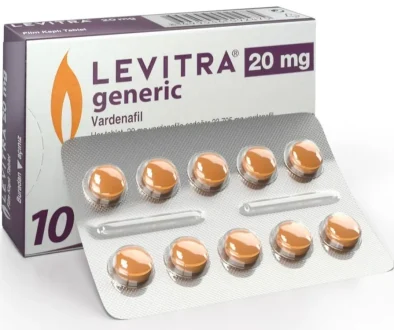Tadalista
Introduction to Tadalista: Medical Leaflet
Tadalista is a well-known medication that contains Tadalafil as its active ingredient. It belongs to a class of drugs known as phosphodiesterase type 5 (PDE5) inhibitors, which are primarily used to treat erectile dysfunction (ED) and benign prostatic hyperplasia (BPH). This article provides a comprehensive overview of the drug, offering insights into its clinical pharmacology, indications, usage, contraindications, precautions, and usage in special populations.
Price: 0.80 USD per pill.
Tadalista 5 mg
| Package | Price | Per Pill | Savings | Savings |
|---|
Tadalista 10 mg
| Package | Price | Per Pill | Savings | Savings |
|---|
Tadalista 20 mg
| Package | Price | Per Pill | Savings | Savings |
|---|
Tadalista 40 mg
| Package | Price | Per Pill | Savings | Savings |
|---|
Tadalista 60 mg
| Package | Price | Per Pill | Savings | Savings |
|---|
Importance and Purpose of the Leaflet
The primary purpose of this leaflet is to provide in-depth information about Tadalista for both healthcare professionals and patients. A thorough understanding of the drug’s characteristics can help in administering it effectively and safely. This medical leaflet is an essential resource that can aid in decision making by providing information on dosage, administration guidelines, potential side effects, and drug interactions.
Unveiling the Drug: What is Tadalista?
Tadalista is an oral medication that enhances blood flow to the penis, helping men achieve and maintain an erection. It is manufactured by Fortune Healthcare Pvt. Ltd and is available in different strengths, including 5mg, 10mg, and 20mg. While Tadalista primarily targets erectile dysfunction, it can also be prescribed for the treatment of symptoms related to benign prostatic hyperplasia.
Clinical Pharmacology of Tadalista
Tadalista, like other PDE5 inhibitors, works by relaxing the smooth muscles of the blood vessels, leading to increased blood flow to specific areas of the body. In this case, it enhances blood flow to the penis, assisting in the achievement and maintenance of an erection.
Mechanism of Action
Under normal circumstances, sexual stimulation leads to the release and increase of nitric oxide in the penis. This increase triggers the production of cGMP, responsible for the relaxation of smooth muscle cells in the corpus cavernosum, leading to increased blood flow and consequently, an erection. Tadalista works by inhibiting the action of PDE5. This inhibition prevents the breakdown of cGMP, leading to increased blood flow and improved erectile function.
Pharmacokinetics and Pharmacodynamics
Tadalafil, the active ingredient in Tadalista, is rapidly absorbed after oral administration, with peak plasma concentrations achieved within 2 hours. It is extensively metabolized in the liver by the CYP3A4 enzyme. The elimination half-life is approximately 17.5 hours, allowing for a prolonged therapeutic window. The effects of Tadalista can last up to 36 hours, earning it the nickname “the weekend pill”.
Indications and Usage of Tadalista
Tadalista is primarily indicated for the treatment of erectile dysfunction (ED) and the signs and symptoms of benign prostatic hyperplasia (BPH). It may also be used for the treatment of both conditions when they coexist.
Prescribing Information
When prescribing Tadalista, it is crucial to consider the patient’s overall health status, potential drug interactions, and the presence of any underlying conditions. It should not be used in patients with a known hypersensitivity to tadalafil or any component of the tablet.
Dosage and Administration Guidelines
For the treatment of ED, the recommended starting dose of Tadalista is 10mg taken prior to anticipated sexual activity, irrespective of meals. Depending on individual efficacy and tolerability, the dose may be increased to 20mg or decreased to 5mg. The recommended dose for BPH is 5mg once daily.
Contraindications and Precautions
Tadalista should not be used in patients with a hypersensitivity to tadalafil or any of the tablet components. It is also contraindicated in patients taking any form of organic nitrate, as this can potentiate hypotensive effects.
Potential Drug Interactions
Tadalista can interact with several drugs, including nitrates, alpha-blockers, antihypertensives, and potent inhibitors of CYP3A4 like ketoconazole and ritonavir. Co-administration with these drugs can result in increased tadalafil plasma concentration.
Warnings and Possible Side Effects
Common side effects associated with Tadalista include headache, dyspepsia, back pain, myalgia, nasal congestion, and flushing. Rare but serious side effects include sudden hearing loss, vision changes, and an erection lasting more than 4 hours.
Special Populations and Tadalista Use
Like any other medication, Tadalista’s use must be carefully considered in specific populations such as pregnant women, lactating mothers, children, and the elderly.
Use in Pregnancy and Lactation
There is limited data on the use of Tadalista in pregnant women. It should be used during pregnancy only if the potential benefit justifies the potential risk to the fetus. It is unknown whether tadalafil is excreted into human milk.
Pediatric and Geriatric Use of Tadalista
Tadalista is not indicated for use in pediatric patients. In elderly patients, dose adjustments may be required based on a careful benefit-risk assessment due to the potential for increased susceptibility to side effects.



